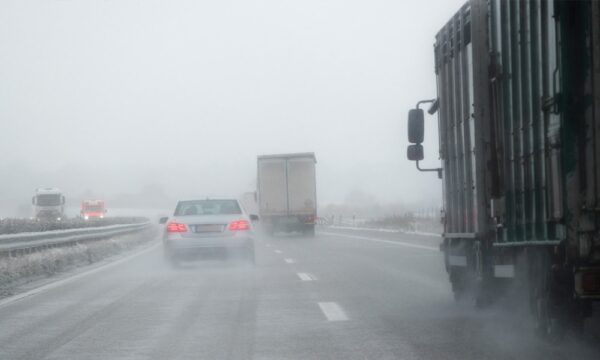
While beautiful to behold, wintertime is more than magical whimsy and brings with it the cold reality of increased danger on the roads. Along with the changing of the seasons comes hazardous weather that primes travel routes for potentially catastrophic accidents. It’s essential to be prepared as cooler weather approaches, particularly for the first frost and rain of the season.
When Freezing Temperatures Hit
The first freeze of the year catches many drivers off guard, since they’ve been driving for months without the added encumbrance of slippery roads and must instantly adjust. Meteorologists note that the first seasonal frost can come as early as mid-September but as late as late-November, depending on location. For Georgians, the first seasonal frost is due around November 15th.
Adjusting to Wet Roads
If you have experience driving in freezing weather conditions, you know that skillful driving can mean the difference between a safe arrival and a catastrophic collision. When the roads see fresh rainfall, oil, tar and traces of rubber can mix with the rain and create a slippery surface, considerably reducing tire traction. This makes for a dangerous combination. Driving in these conditions requires extra caution, and you should seek to maintain control over your car with the added potential of sudden and unexpected movements. Even a thin layer of moisture on the road can cause a car to hydroplane and spin out of control.
Why Bridges Freeze Before Roads
With their narrow structure, bridges allow little to no room for reactive space when a vehicle encounters a problem. Drivers should remain alert, especially in two-way traffic. Your best approach for a bridge during slick conditions is to proceed slowly and keep a safe distance.
Bridges and overpasses can pose yet another hazard when not maneuvered with care in freezing temps. Because bridges are exposed to open air on all sides, they freeze faster than roadways when temperatures drop, gathering snow and ice much more quickly. The traction on the road and bridge is also often different and can startle unknowing drivers. Thus, when a driver is traveling at full speed upon approaching an icy bridge, drivers quickly lose control and sudden impacts occur at rapid speeds. Bridges and overpasses are common sites for chain-reaction accidents.
Adverse Weather Increases Auto Collisions
Accidents can still happen, even when all precautions are taken. When they do, it can turn your world upside down. If you find yourself or a loved one injured by a collision, it’s important that you have the right help by your side. The attorneys at Fried Goldberg are experienced at handling cases just like yours, and can help you in your time of need. Call us today at 877-591-1801 for a risk-free no-obligation consultation and take the first step to getting the compensation you deserve.
